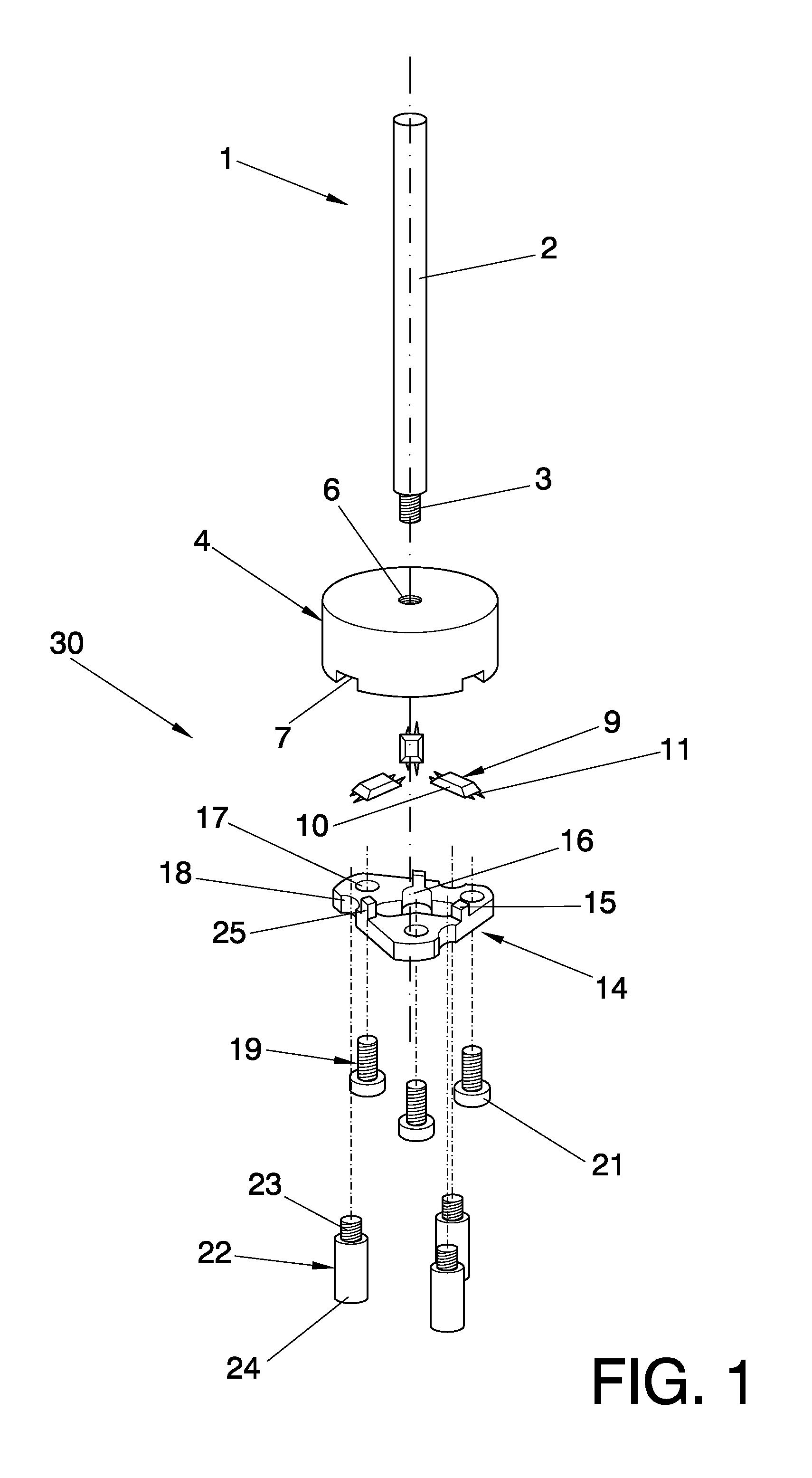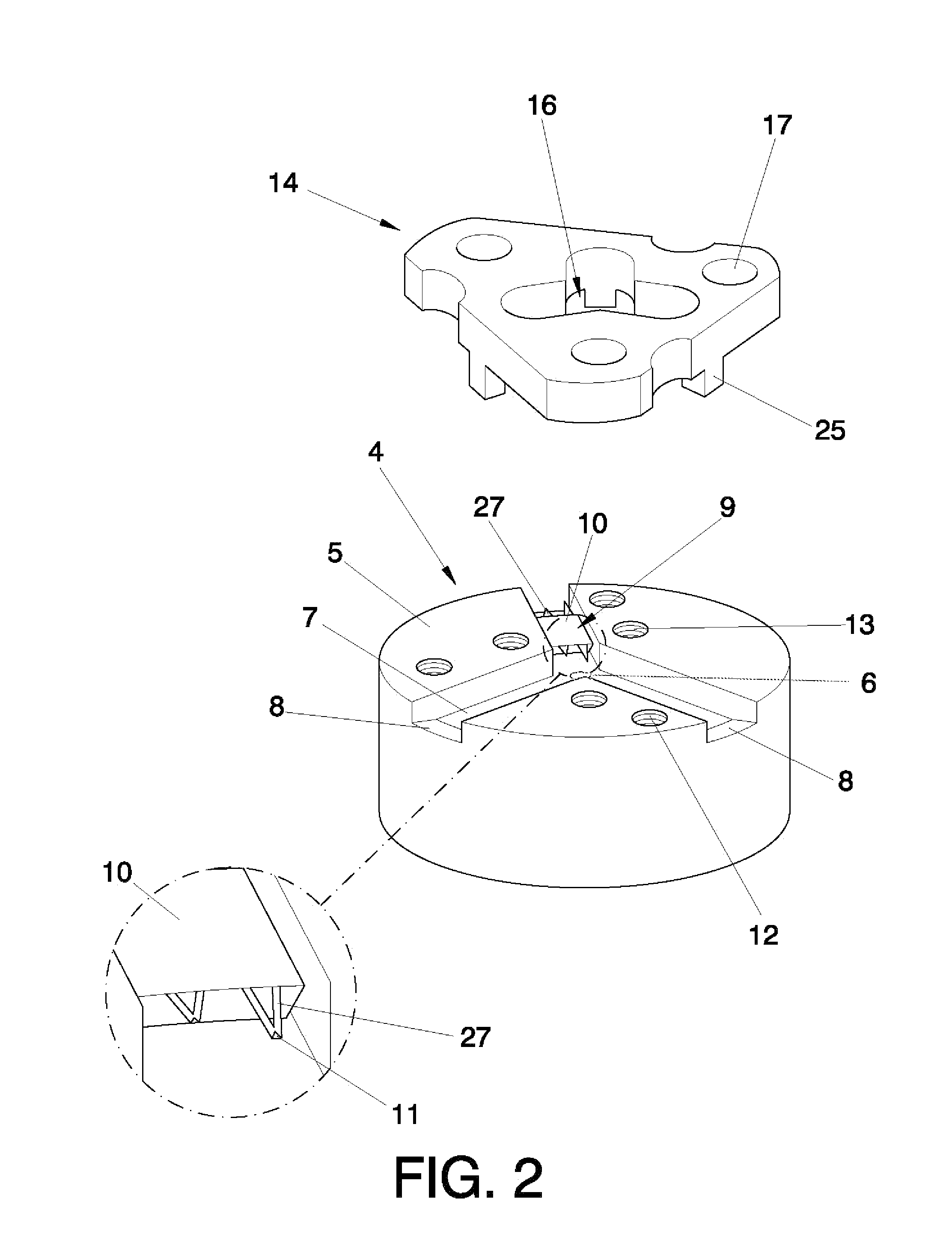Apparatus and method for the functionalisation of afm tips
a technology of atomic force microscopy and apparatus, which is applied in the direction of mechanical roughness/irregularity measurements, measurement devices, instruments, etc., can solve the problems of afm probes being quite small and fragile, breaking the cantilever protruding from the chip, and very likely to be damaged, so as to achieve convenient implementation and optimize the cost
- Summary
- Abstract
- Description
- Claims
- Application Information
AI Technical Summary
Benefits of technology
Problems solved by technology
Method used
Image
Examples
Embodiment Construction
[0040]In one preferred embodiment of the invention, the apparatus, a holder 30 for AFM probes, is fabricated from a chemically inert material (PTFE) having a cylindrical shape. As is depicted in FIG. 1, this holder 30 comprises two cylindrical parts, a first part 4 and a second part 14.
[0041]In the present embodiment, the first part of the holder 4 as shown in FIG. 2 has a substantially flat surface 5 with three probe receptacles formed by the grooves 7 in order to accommodate three surfaces that are AFM probes 9. The AFM probes 9 in the grooves 7 of the probe receptacle can be moved longitudinally along a radial path, but not laterally. As a result, the grooves 7 of the probe receptacle do not touch the cantilevers 27 and tips 11 of the AFM probes 9. As shown in FIG. 3, each groove 7 has tilted edges, being one of its ends a substantially tilted plane 8 forming an angle 40 with the bottom of that groove, and the other being connected to the other grooves. Each groove 7 is 1.6 mm wi...
PUM
 Login to View More
Login to View More Abstract
Description
Claims
Application Information
 Login to View More
Login to View More - R&D
- Intellectual Property
- Life Sciences
- Materials
- Tech Scout
- Unparalleled Data Quality
- Higher Quality Content
- 60% Fewer Hallucinations
Browse by: Latest US Patents, China's latest patents, Technical Efficacy Thesaurus, Application Domain, Technology Topic, Popular Technical Reports.
© 2025 PatSnap. All rights reserved.Legal|Privacy policy|Modern Slavery Act Transparency Statement|Sitemap|About US| Contact US: help@patsnap.com



